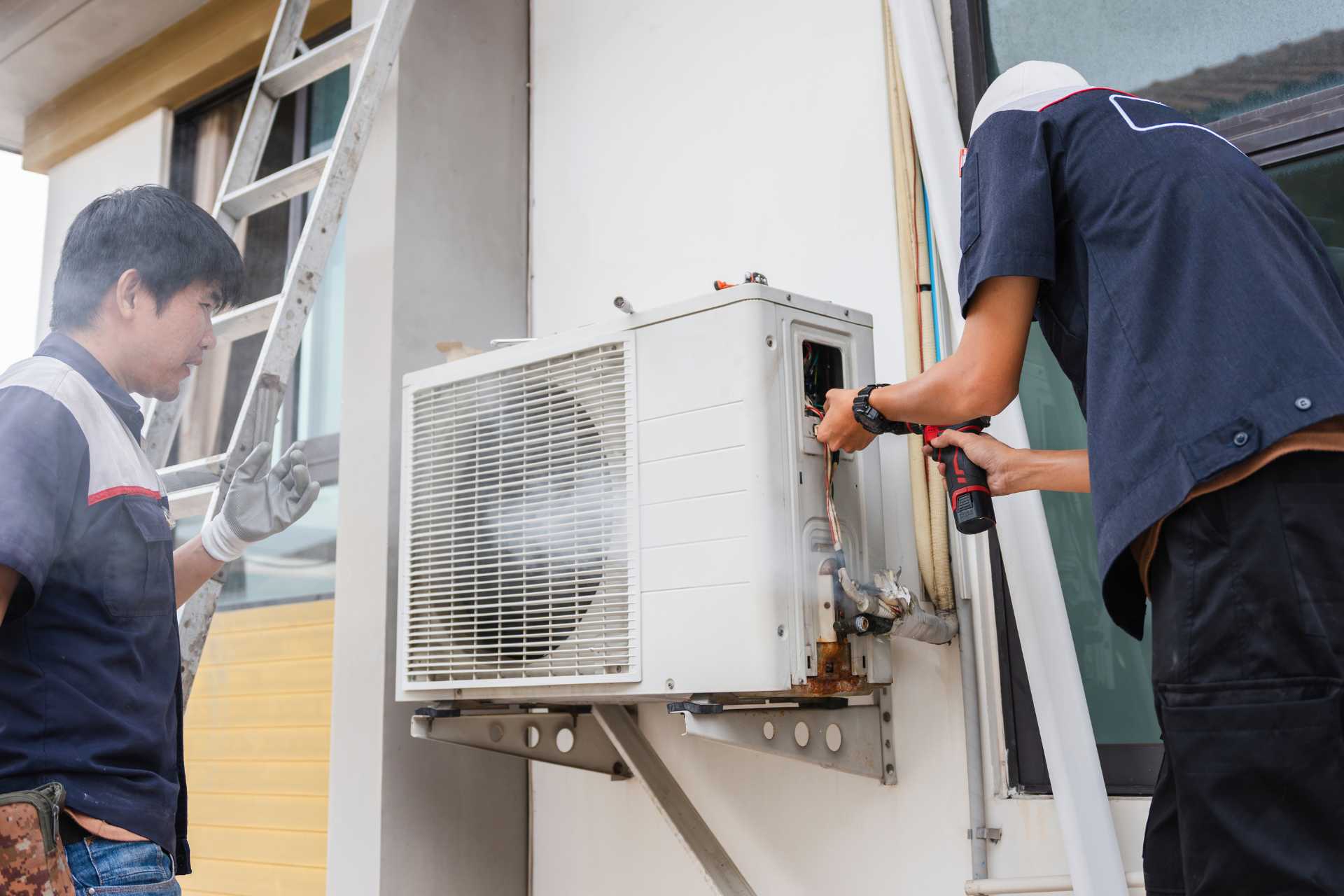Top HVAC Maintenance Tasks to Tackle Before Winter Arrives

As the crisp autumn air settles in and the days grow shorter, Canadians know that winter is just around the corner. We begin preparing our homes for the colder months by pulling out warmer blankets, digging out winter coats, and adjusting our window coverings to keep the precious warmth inside. While these comforting rituals are important, it is the perfect time to give the home’s most critical winter appliance—the heating system—some essential attention. Scheduling furnace repair or maintenance during the fall ensures your unit is ready before temperatures drop. A few proactive maintenance tasks completed in the fall can make a huge difference in a home’s comfort, energy bills, and furnace reliability. Before the first snowfall, it’s wise to run through a checklist to ensure the heating system is ready for the demands of a Canadian winter. Partnering with a professional HVAC company for a fall tune-up is the best way to guarantee a safe, efficient, and worry-free season ahead.
Your Fall HVAC Tune-Up Checklist: 6 Top Maintenance Tasks
1. Change the Air Filter
Changing the furnace filter is the single most important DIY task for any homeowner. This simple screen acts as the first line of defence. It traps dust, pet dander, allergens, and other airborne particles. This stops them from entering the furnace and circulating throughout the home. Over time, the filter becomes clogged with debris, which severely restricts airflow. A clogged filter forces the furnace to work much harder to pull in air, wasting energy, increasing strain on components, and even causing overheating or shutdowns. A clean filter is key to both efficiency and better indoor air quality.
Checking and replacing the filter is a simple job that pays huge dividends. Most filters are in a slot on the side of the furnace. Simply slide the old filter out and note its size, which is printed on the cardboard frame. Purchase a replacement of the same size and slide it in. Ensure the arrow on the frame points in the direction of the airflow (toward the furnace). This task should be done every one to three months, depending on the filter type and household factors like having pets.
2. Clear the Way for Warmth: Clean Vents and Registers
For a furnace to heat a home effectively, the warm air it produces must be able to circulate freely. Over time, heat registers and return air vents throughout the home can accumulate dust, pet hair, and other debris. More often, they become unintentionally blocked by furniture, rugs, or drapes that have shifted over the year. Blocked vents disrupt the even distribution of heat, leading to uncomfortable cold spots in some rooms and stuffiness in others. This forces the furnace to run longer and work harder to bring the entire house up to the desired temperature, wasting energy in the process.
Before the heating season begins, take a few minutes to walk through every room and inspect all the vents. Use a vacuum with a hose attachment to clean any visible dust or debris from the grilles of both the heat registers (where warm air comes out) and the larger return air vents (where air is pulled back to the furnace). At the same time, ensure that no furniture, rugs, or other household items are blocking these openings. This simple step ensures balanced airflow and helps the system operate as efficiently as it was designed to.
3. Give Your Thermostat a Check-Up
The thermostat is the brain of the entire HVAC system. It tells the furnace when to turn on, how long to run, and when to shut off. If this crucial component is not functioning correctly, it can lead to a host of problems. A malfunctioning thermostat might give inaccurate temperature readings, causing the furnace to run unnecessarily or fail to turn on when it should. This results in an uncomfortable home and wasted energy. For programmable thermostats, incorrect settings can also lead to inefficiency if the schedule is not optimized for the household’s routine.
A quick check-up in the fall can prevent these issues. Start by switching the thermostat from “cool” to “heat.” Set the temperature a few degrees higher than the current room temperature to confirm that it properly signals the furnace to turn on. For battery-powered models, now is the perfect time to replace the batteries to prevent a system shutdown on a cold night. Finally, review any programmed schedules to ensure they align with the household’s winter routine, automatically lowering the temperature at night or when no one is home to save energy.
4. Test the System Before You Need It
The worst time to find a problem with a heating system is on the first truly cold night of the year. HVAC technicians are at their busiest then. A simple “test run” on a cool autumn day is a proactive step. It allows you to identify and fix potential issues without the stress of an emergency. This gives homeowners plenty of time to address problems on their own schedule. It avoids a rushed and expensive emergency service call in the middle of a blizzard.
To perform a test run, just follow the thermostat check-up steps. Turn the system to “heat” and raise the set temperature. Let the furnace run for a full cycle, which is about 10 to 15 minutes. During this time, listen for any unusual noises like rattling or grinding. Check that warm air is coming from the vents. A faint burning smell is normal for the first run. This is just dust burning off the components. However, if the system fails to ignite, blows cold air, or makes alarming noises, it is a clear sign to call a professional.
5. Clear Exterior Vents
Modern high-efficiency furnaces have two plastic pipes that run from the unit to the outside of the house. One is an intake pipe that draws in fresh air for combustion, and the other is an exhaust pipe that vents gases. It is absolutely essential that these pipes remain clear of any obstructions. During the fall, they can become blocked by leaves, nests from small animals, or other wind-blown debris. A blockage can starve the furnace of the air it needs, causing it to shut down automatically as a safety precaution.
Before winter sets in, locate these vents on the side of the house and ensure they are clear of any visible obstructions. This is also a good habit to maintain throughout the winter. Heavy snowfall can drift up and block these vents, so it is important to keep them shovelled out. A furnace that suddenly stops working on a snowy day may simply have a blocked vent. Clearing it is a simple fix that can save a service call, but ensuring it is clear before the snow flies is an even better preventative measure.
6. Schedule a Professional Tune-Up
While the previous steps are essential DIY tasks, the single most important task to prepare a furnace for winter is to schedule a professional tune-up. An annual inspection by a certified technician goes far beyond what a homeowner can safely or effectively do. The technician performs a deep clean of the internal components, including the burners and flame sensor, to ensure efficient and reliable operation. They also conduct a thorough safety inspection, checking for any cracks in the heat exchanger that could lead to a dangerous carbon monoxide leak and testing all safety controls.
This professional service is an investment in peace of mind, safety, and longevity. The technician can spot and fix small problems before they become major, costly breakdowns. A tune-up also ensures the system is running at peak efficiency, which saves money on energy bills all winter long. If the system is old or has required frequent repairs, the technician can provide an honest assessment of its remaining lifespan. This allows a homeowner to proactively budget for an HVAC upgrade instead of being caught by surprise with a complete system failure in the dead of winter.
Beyond the Furnace: A Whole-Home Approach to Warmth
Even the most efficient, well-maintained furnace will waste energy if the home itself is not prepared to keep the warmth in. A home’s “building envelope”—its walls, roof, windows, and doors—needs to be properly sealed to prevent the expensive heated air from escaping. This is where homeowners can take simple steps that work in harmony with their HVAC system. The fact is, the state of your windows and doors affects your HVAC system’s performance significantly. Sealing drafts around these openings with weatherstripping or caulk is a simple, cost-effective way to reduce heat loss.
Insulated window coverings, such as cellular shades or heavy drapes, act as an extra layer of insulation over the glass, which is one of the biggest sources of heat loss in any home. Keeping them closed, especially at night, can make a noticeable difference in a room’s comfort and reduce the strain on the furnace. Another easy tip is to reverse the direction of ceiling fans to a clockwise rotation. This pushes the warm air that has risen to the ceiling back down into the living space. These small efforts work together to create a cozier home and help reduce energy bills.
The Warm-Up Act for a Worry-Free Winter
In the end, this fall checklist is a simple, proactive way to ensure a warm, safe, and efficient winter. Taking these steps before the snow flies prevents the stress of a mid-winter breakdown, saves money on energy costs, and extends the life of one of the most important systems in a home. Do not wait for a no-heat emergency on a freezing winter night. Schedule a professional fall furnace tune-up today and enjoy peace of mind all season long. A certified technician can ensure the system is safe, reliable, and running at peak performance, so the only thing to worry about is enjoying the cozy season ahead.



